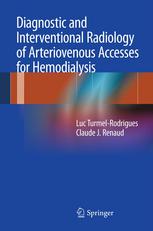

Most ebook files are in PDF format, so you can easily read them using various software such as Foxit Reader or directly on the Google Chrome browser.
Some ebook files are released by publishers in other formats such as .awz, .mobi, .epub, .fb2, etc. You may need to install specific software to read these formats on mobile/PC, such as Calibre.
Please read the tutorial at this link: https://ebookbell.com/faq
We offer FREE conversion to the popular formats you request; however, this may take some time. Therefore, right after payment, please email us, and we will try to provide the service as quickly as possible.
For some exceptional file formats or broken links (if any), please refrain from opening any disputes. Instead, email us first, and we will try to assist within a maximum of 6 hours.
EbookBell Team

5.0
70 reviewsThis is the first textbook entirely dedicated to the endovascular treatment of complications related to arteriovenous accesses for hemodialysis (native fistulas and prosthetic grafts). The book addresses the anatomy of upper limb arteries and veins as well as the clinical presentation of patients and the way to perform and read a fistulogram. Many details and illustrations are provided, clarifying the subtleties in catheterization and the dilation of stenoses. From a strategic point of view, it is explained for the first time that many stenoses must either be ignored or deliberately underdilated. A wealth of images helps to understand the different stages of access recovery from thrombosis. As the number of incident dialysis patients is increasing by 5% every year, this is a field of growing interest. In testament to this there are several annual or bi-annual meetings held by numerous national and international societies (vascularaccesssociety.com, sfav.org, vasamd.org, dialysiscontroversies.org, asdin.org).